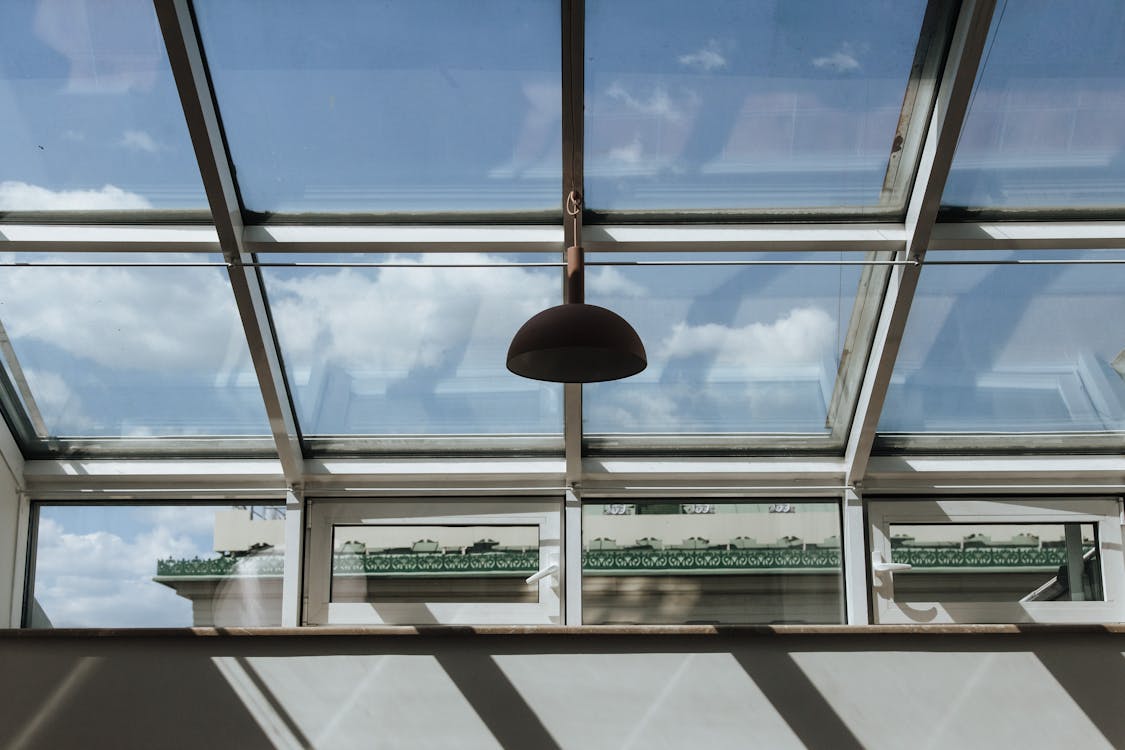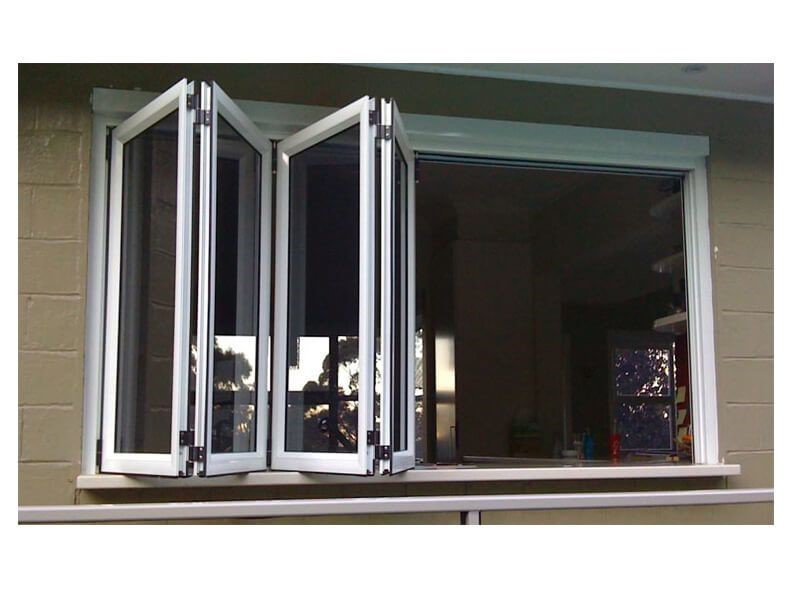Aluminum Windows and Doors: What Makes Them Energy-Efficient?
Aluminum windows and doors redefine energy efficiency, creating comfortable and sustainable homes.
The world’s population is growing fast. Energy consumption is rising with it. In 2021, the global population was 7.9 billion. By 2026, it may reach 8.6 billion. This growth increases energy demand. We consume energy in many ways every day. This is called World Energy Consumption.
Energy is used by different sectors. These are:
-
Residential
-
Commercial
-
Industrial
-
Transportation
Residential energy use includes gas for cooking and heating. It also includes electricity. Electricity and gas are the main energy forms in homes. In the US, they make up 50% of home energy use. The commercial sector uses the same energy sources. They just use larger amounts.
Population growth greatly impacts the industrial sector. Demand directly links to production. This affects industrial energy use. In 2020, the industrial sector used 30% of total US energy. Global industrial energy use hit 60 quadrillion British thermal units in 2020. This sector consumes:
-
Gas
-
Coal/Coal coke
-
Petrol
-
Electricity
-
Chemicals
Non-renewable fuels take years to form. They also take years to extract. Using energy carelessly will deplete these fuels. Energy preservation is a key idea of our time. Debates focus on its long-term benefits. Experts urge replacing non-renewable energy. They suggest solar and wind energy. Solar panels and electric cars are popular. They aim to reduce energy depletion.
Homes are also changing. Wood is being replaced with aluminum. Consumers want eco-friendly products. They also want recyclable options. Is aluminum energy efficient on its own? Not entirely. Aluminum transfers energy easily. This means it is not a good insulator alone. But, with other materials, aluminum has two benefits:
-
It is better for the environment.
-
It will reduce energy consumption.
Aluminum window and door makers use technology. This makes aluminum home-friendly. It becomes a convenient choice.

Making Aluminum Energy Efficient
Energy consumption depends on minimal energy loss. Aluminum is a metal. It transfers energy from cold to warm areas. Simply put, aluminum alone does not save energy. It transfers heat, making it a poor insulator.
Thermal Break Aluminum Windows
To make aluminum a better insulator, a thermal break is added. This is a layer inside and outside the window frame. This technology is also in concrete buildings. It lowers energy emissions. Designers ensure the thermal break’s R-value is low. It should be no more than 0.25. The R-value measures resistance to heat flow. A higher R-value means better insulation.
Materials used in thermal breaks include:
-
Wood timber
-
Hardened wood
Organizations for metal building materials require thermal breaks. They improve metal product performance. They conserve maximum energy. Modern aluminum doors and windows come with a thermal break. This lowers energy waste.
Besides thermal breaks, other materials boost aluminum’s energy efficiency. Window spacers provide glass strength. Spacers are common with aluminum frames. They add support to glass panes. They are placed between two glass panes. They work like glazing.
Window Glazing
Glazed windows do not fix glass directly. A covering holds the glass. The glass does not touch the metal frame or wall.
Double or triple glazing reduces sound and energy transfer. It saves heating and cooling costs. Double glazing uses two or more glass panes. Air or gas separates them. Double-glazed windows are popular in humid areas. Moisture can seep through windows. These windows have air-separated panes. Moisture does not collect. This also reduces heat loss. Heat is trapped in the air space. This greatly reduces heat transfer.
A glazed window has a lower overall heat transfer value. Glazing options are available. Look for them in aluminum bi-fold windows. They are also in aluminum folding windows for businesses.
E-Coatings
If your window is glazed, you can still save heat. This is true even with non-thermal aluminum windows. Double glazing can be costly. Low-E coatings are an option. They insulate windows better. Lower light emission means better light and heat reflection. E-coatings help glass reflect heat and light. In winter, they reflect heat and light inside.
There are two ways to e-coat glass:
-
Solar E-coating: The glass is coated in a chamber. This happens before it is cut.
-
Passive E-coating: A thin layer is applied during manufacturing. The glass is hot then. This creates a stronger bond.
Discuss glass coating with your supplier. If you buy aluminum windows in bulk, know market preferences. Know popular glass types.
Low-emittance (Low-E) window frames are a good choice. With aluminum frames, they resist corrosion. They last for 10 to 15 years.
Saving energy is our duty. We should choose affordable ways. Ecological well-being is also vital. Using much wood harms ecosystems. Recyclable aluminum has more advantages. It does not rot easily. It helps conserve energy.
Understanding Key Energy Efficiency Ratings
When buying windows and doors, look for specific ratings. These ratings tell you about performance.
U-Factor (U-Value)
The U-factor measures how well a window or door resists heat flow. A lower U-factor means better insulation. It tells you how much heat escapes through the window. This is important in cold climates. It helps keep heat inside. It also keeps heat out in warm climates. The entire window assembly gets rated. This includes the frame, glass, and spacers.
Solar Heat Gain Coefficient (SHGC)
SHGC measures how much solar radiation (heat) passes through a window. It is a number between 0 and 1. A lower SHGC means less solar heat enters your home. This is good for hot climates. It reduces the need for air conditioning. In cold climates, a higher SHGC can be good. It allows passive solar heating.
Air Leakage (AL)
Air leakage measures how much air passes through the window seals. It is measured in cubic feet per minute per square foot (cfm/sq. ft.). A lower AL rating means less air infiltration. This prevents drafts. It helps maintain indoor temperature. Good seals are vital for energy efficiency.
Visible Transmittance (VT)
VT measures how much visible light passes through the glass. A higher VT means more natural light enters. This can reduce the need for artificial lighting. It improves indoor comfort.
Condensation Resistance (CR)
CR measures how well a window resists condensation build-up. It is rated on a scale of 0 to 100. A higher CR means less condensation. Condensation occurs when warm, moist air meets a cold surface. Good CR means the interior glass stays warmer. This reduces moisture problems.
These ratings are often found on National Fenestration Rating Council (NFRC) labels. The NFRC is an independent body. They provide fair and accurate ratings. Look for their label when buying.
Oridow’s Energy-Efficient Product Range
Oridow offers a variety of aluminum windows and doors. All are designed for energy efficiency.
Oridow Aluminum Doors
Our aluminum doors come with thermal breaks. They use advanced glazing options. This ensures minimal heat transfer. They are durable. They provide excellent security. They reduce energy bills.
Oridow uPVC Doors
uPVC is a great insulator. Oridow uPVC doors have multi-chambered frames. They often come with double or triple glazing. This traps air. It prevents heat loss. uPVC is also low-maintenance. It resists weathering.
Oridow uPVC Windows
Like our uPVC doors, our uPVC windows prioritize energy saving. They have low thermal conductivity. They provide tight seals. They are easy to fabricate for multi-glazing. This makes them good for energy-efficient buildings.
Oridow Aluminum Windows
Our aluminum windows feature integrated glazing units (IGU). These include double or triple panes. They have warm edge spacers. Argon gas fills improve insulation. Low-E coatings reflect heat. These windows meet high energy efficiency standards.
-
Oridow Sliding Windows: While sliding windows typically have higher air leakage, Oridow’s sliding windows are designed with advanced seals and thermal breaks to minimize drafts and maximize thermal performance. They offer wide views and easy operation.
-
Oridow Casement Windows: These are among the most energy-efficient window styles. They create a tight seal when closed. Oridow casement windows offer superior insulation. They also provide excellent ventilation when open. They are ideal for climates needing strong thermal performance.
-
Oridow Awning Windows: Hinged at the top, these open outward from the bottom. They allow ventilation even in light rain. Oridow’s awning windows are designed with good sealing. They provide reliable energy efficiency. They are great for bathrooms and kitchens.
-
Oridow Jalousie Windows: Known for maximum airflow. Oridow’s jalousie windows are best for warm, humid climates. While traditional jalousie windows may not be the most energy-efficient due to gaps, Oridow offers improved versions. These maximize ventilation while minimizing excessive energy loss. They focus on precise slat alignment and better seals.
-
Oridow Bi-fold Doors: These doors fold open to connect indoor and outdoor spaces. Oridow’s aluminum bi-fold doors incorporate thermal breaks and advanced glazing. This ensures they maintain thermal performance. They prevent heat loss or gain.
-
Oridow Pivot Doors: These doors pivot on a central axis. They create a grand entrance. Oridow’s pivot doors use insulated panels. They have high-performance glass options. This ensures energy efficiency. They also offer excellent sound insulation.
-
Oridow Swing Sliding Doors: These versatile doors can swing or slide open. Oridow’s swing sliding doors integrate robust frames with insulated glass. This provides both functionality and strong thermal performance. They are perfect for large openings.
Benefits of Energy-Efficient Windows and Doors
Investing in energy-efficient windows and doors offers many advantages.
Lower Energy Bills
This is a primary benefit. Windows and doors account for much heat transfer. Energy-efficient products reduce this transfer. This means your heating and cooling systems work less. You save money on utility bills all year round.
Improved Indoor Comfort
Energy-efficient windows maintain steady indoor temperatures. They reduce cold spots and drafts. In winter, they keep heat in. In summer, they keep the heat out. This creates a more comfortable living space.
Reduced Noise Pollution
Multiple panes of glass and gas fills also dampen outside noise. This creates a quieter home environment. This is good for homes near busy roads or urban areas.
Increased Home Value
Energy-efficient upgrades add value to your home. Buyers look for homes with lower operating costs. They also seek modern features. These windows are a great selling point.
Better Indoor Air Quality
Tight seals prevent outdoor pollutants from entering. This includes dust and allergens. This can improve air quality inside your home. It benefits those with allergies or respiratory issues.
Environmental Impact
Reducing energy consumption means a smaller carbon footprint. You use fewer fossil fuels. This helps the environment. Choosing recyclable materials like aluminum further supports sustainability goals.
Government Incentives for Energy-Efficient Upgrades
Many governments offer incentives. These encourage energy-efficient home improvements. These can include:
-
Tax credits
-
Rebates
-
Grants
Check local and national programs. Oridow can help you find qualifying products.
The Oridow Commitment
Oridow is a leading aluminum window and door manufacturer. We have been specializing since 2008. Our team focuses on bi-fold doors, casement windows, and uPVC doors. We use reliable aluminum. All our products meet EN standards.
We offer a 10-year warranty. We provide window installation services in Fuzhou, China. We also make custom aluminum windows. International brands can buy aluminum windows online.
Oridow is committed to quality and sustainability. We help you make your home more efficient.
Contact Oridow today for your energy-efficient window and door needs.
Email: sales@oridow.com Tel: 86 131 7030 0715
Our Products:
-
Aluminum doors
-
uPVC doors
-
uPVC windows
-
Aluminum windows
-
Impact Windows
-
Awning Windows
-
Jalousie Windows
-
Pivot Doors
-
Swing Sliding Door
Learn More,
4 Reasons Why Switching To uPVC Is A Good Idea
4 Ways of Going Green in Your Home
7 Energy-Saving Hacks for Your Homes
FAQs About Aluminum Windows and Doors Energy Efficiency
What does “energy-efficient” mean for windows and doors?
Energy-efficient means a window or door minimizes heat transfer. It keeps warm air in during winter. It keeps cool air in during summer. This reduces your energy use.
How does a thermal break work in aluminum frames?
A thermal break is an insulating material. It is placed within the aluminum frame. It separates the inner and outer parts. This stops heat from easily passing through the metal.
What is the U-factor, and why is it important?
The U-factor measures heat transfer. A lower number means better insulation. It tells you how well a window resists heat loss. This helps lower heating and cooling costs.
What is SHGC, and why does it matter?
SHGC is the Solar Heat Gain Coefficient. It measures how much solar heat enters through glass. A low SHGC helps keep homes cool in sunny climates. A high SHGC can help heat a home in cold climates.
Is double glazing better than single glazing for energy efficiency?
Yes, double glazing is much better. It uses two panes of glass. An air or gas space separates them. This creates an insulating barrier. It greatly reduces heat transfer compared to single panes.
What are Low-E coatings, and how do they save energy?
Low-E (low-emissivity) coatings are thin, metallic layers on glass. They reflect radiant heat. In winter, they reflect heat back indoors. In summer, they reflect heat away. This helps maintain stable temperatures.
Do all aluminum windows have thermal breaks?
Not all older aluminum windows have thermal breaks. Modern, energy-efficient aluminum windows almost always include them. This is key to their performance.
How do argon gas fills make windows more efficient?
Argon gas is a non-toxic, inert gas. It is denser than air. Filling the space between glass panes with argon slows heat transfer. This boosts insulation.
What is the typical lifespan of energy-efficient aluminum windows?
With proper care, energy-efficient aluminum windows can last 20-30 years or more. Their durability and resistance to corrosion contribute to their long life.
Can energy-efficient windows reduce outside noise?
Yes, multi-pane glazing, gas fills, and tight seals found in energy-efficient windows help reduce sound transmission. This makes your home quieter inside.





